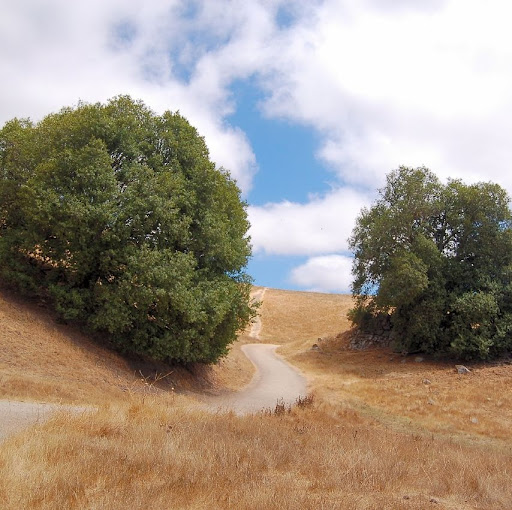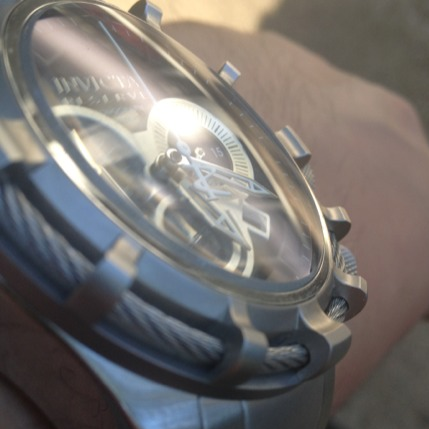Kyu S Kim
age ~48
from San Jose, CA
- Also known as:
-
- Kyu Seok Kim
- Kyu T Kim
- Seok Kyu Kim
- Kyuseok Kim
- Kim Kyuseok
- Phone and address:
- 2205 Beech Cir, San Jose, CA 95131
Kyu Kim Phones & Addresses
- 2205 Beech Cir, San Jose, CA 95131
- Santa Clara, CA
- San Ramon, CA
Lawyers & Attorneys
License Records
Kyu Won Kim
License #:
MA.003599 - Active
Issued Date:
Jul 21, 2016
Expiration Date:
Jun 8, 2018
Type:
Medication Administration (V)
Kyu Won Kim
License #:
PST.021557 - Active
Issued Date:
May 23, 2016
Expiration Date:
Dec 31, 2017
Type:
Pharmacist
Kyu H Kim
License #:
0225163830
Category:
Real Estate Individual
Medicine Doctors

Kyu Han C. Kim
view sourceSpecialties:
Internal Medicine
Work:
Prominice Medical Services
934 Myrtle Ave, Brooklyn, NY 11206
(718)9197053 (phone), (718)8021113 (fax)
Prominice Medical Center
332 Dekalb Ave FL 1, Brooklyn, NY 11205
(718)8525252 (phone), (718)8021113 (fax)
Prominice Medical Services PC
332 Dekalb Ave, Brooklyn, NY 11205
(718)8554900 (phone), (718)8021113 (fax)
934 Myrtle Ave, Brooklyn, NY 11206
(718)9197053 (phone), (718)8021113 (fax)
Prominice Medical Center
332 Dekalb Ave FL 1, Brooklyn, NY 11205
(718)8525252 (phone), (718)8021113 (fax)
Prominice Medical Services PC
332 Dekalb Ave, Brooklyn, NY 11205
(718)8554900 (phone), (718)8021113 (fax)
Education:
Medical School
UMDNJ School of Osteopathic Medicine
Graduated: 2006
UMDNJ School of Osteopathic Medicine
Graduated: 2006
Procedures:
Electrocardiogram (EKG or ECG)
Pulmonary Function Tests
Vaccine Administration
Pulmonary Function Tests
Vaccine Administration
Conditions:
Abdominal Hernia
Abnormal Vaginal Bleeding
Acute Renal Failure
Atrial Fibrillation and Atrial Flutter
Bipolar Disorder
Abnormal Vaginal Bleeding
Acute Renal Failure
Atrial Fibrillation and Atrial Flutter
Bipolar Disorder
Languages:
English
Spanish
Spanish
Description:
Dr. Kim graduated from the UMDNJ School of Osteopathic Medicine in 2006. He works in Brooklyn, NY and 2 other locations and specializes in Internal Medicine. Dr. Kim is affiliated with New York Methodist Hospital, The Brooklyn Hospital Center and University Hospital Of Brooklyn.

Kyu H. Kim
view sourceSpecialties:
Pediatrics
Work:
Kyu Hyun Kim MD
15243 Vanowen St STE 300, Van Nuys, CA 91405
(818)7864910 (phone), (818)7865512 (fax)
15243 Vanowen St STE 300, Van Nuys, CA 91405
(818)7864910 (phone), (818)7865512 (fax)
Education:
Medical School
Univ Estadual De Campinas, Fac De Cien Med, Campinas, Sp, Brazil
Graduated: 1987
Univ Estadual De Campinas, Fac De Cien Med, Campinas, Sp, Brazil
Graduated: 1987
Conditions:
Acute Bronchitis
Acute Conjunctivitis
Acute Pharyngitis
Acute Sinusitis
Acute Upper Respiratory Tract Infections
Acute Conjunctivitis
Acute Pharyngitis
Acute Sinusitis
Acute Upper Respiratory Tract Infections
Languages:
English
Korean
Spanish
Korean
Spanish
Description:
Dr. Kim graduated from the Univ Estadual De Campinas, Fac De Cien Med, Campinas, Sp, Brazil in 1987. He works in Van Nuys, CA and specializes in Pediatrics. Dr. Kim is affiliated with Northridge Hospital Medical Center, Providence Holy Cross Medical Center and Valley Presbyterian Hospital.

Kyu B. Kim
view sourceSpecialties:
Diagnostic Radiology
Work:
Salem Radiology ConsultantsSalem Radiology Consultants PC
2925 Ryan Dr SE, Salem, OR 97301
(503)3991262 (phone), (503)3710777 (fax)
2925 Ryan Dr SE, Salem, OR 97301
(503)3991262 (phone), (503)3710777 (fax)
Education:
Medical School
Wayne State University School of Medicine
Graduated: 2003
Wayne State University School of Medicine
Graduated: 2003
Languages:
English
Spanish
Spanish
Description:
Dr. Kim graduated from the Wayne State University School of Medicine in 2003. He works in Salem, OR and specializes in Diagnostic Radiology. Dr. Kim is affiliated with Salem Health West Valley and Salem Hospital.

Kyu C. Kim
view sourceSpecialties:
Rheumatology
Work:
Rheumatology Consultants PC
1351 Main St STE 1, Brockton, MA 02301
(508)5874112 (phone), (508)5836810 (fax)
1351 Main St STE 1, Brockton, MA 02301
(508)5874112 (phone), (508)5836810 (fax)
Education:
Medical School
Tulane University School of Medicine
Graduated: 2008
Tulane University School of Medicine
Graduated: 2008
Languages:
English
Description:
Dr. Kim graduated from the Tulane University School of Medicine in 2008. He works in Brockton, MA and specializes in Rheumatology. Dr. Kim is affiliated with Good Samaritan Medical Center and Morton Hospital.

Kyu Hwan Kim
view sourceSpecialties:
Family Medicine
General Practice
Surgery
General Practice
Surgery
Education:
Yonsei University (1963)

Kyu Young Kim
view sourceSpecialties:
Emergency Medicine
Emergency Medical Services
Emergency Medical Services
Education:
Temple University Physicians (2000)

Kyu Soo Kim
view sourceSpecialties:
Obstetrics & Gynecology
Gynecology
Gynecology
Education:
Seoul National University (1952)

Kyu Hyun Kim
view sourceSpecialties:
Pediatrics
Internal Medicine
Internal Medicine
Education:
State University of New York
Name / Title
Company / Classification
Phones & Addresses
Owner
Bridal Fashion Faire
Bridal Shops
Bridal Shops
161 Spadina Ave, Toronto, ON M5V 2L6
(416)5983174
(416)5983174
Executive Officer
Easterners
Residential Electric Lighting Fixtures
Residential Electric Lighting Fixtures
201 S. 4Th St., San Jose, CA 95112
Owner
Bridal Fashion Faire
Bridal Shops
Bridal Shops
(416)5983174
President
100MAC, Inc
130 E San Fernando St, San Jose, CA 95112
ROCKY SUSHI CORPORATION
ACS Architects
Architecture & Planning · Architectural Services · Architect · Architectural Svcs
Architecture & Planning · Architectural Services · Architect · Architectural Svcs
212 High St SUITE #105, Palo Alto, CA 94301
(650)3211219, (650)3212643
(650)3211219, (650)3212643
President
VANCOUVER DRY CLEANERS, INC
Director , VP
ACECOM INC
26 4 St #7, Los Altos, CA 94022
Wikipedia

MinKyu Kim
view sourceApr 9, 2009 ... Min-Kyu Kim (sometimes listed as Kim Min-Kyu, born August 11, 1983) is a South Korean luger who competed from 1999 to 2006. ...
Isbn (Books And Publications)

The Age Of Visions And Arguments: Parliamentarianism And The National Public Sphere In Early Meiji Japan
view sourceAuthor
Kyu Hyun Kim
ISBN #
0674017765

Resumes

Kyu Kim
view sourceLocation:
United States

Kyu Kim
view source
Kyu Kim San Jose, CA
view sourceWork:
KLA-Tencor
2013 to 2000
Strategic Planning Manager/Master Scheduler KLA-Tencor
Milpitas, CA
2012 to 2013
Business Program Manager KLA-Tencor
Milpitas, CA
2005 to 2012
Senior Business Analyst E-Book Systems, Inc.
Santa Clara, CA
2003 to 2005
Manager, Enterprise Solutions NexxIT, INC
Santa Clara, CA
2000 to 2003
Manager, Strategic planning and marketing
2013 to 2000
Strategic Planning Manager/Master Scheduler KLA-Tencor
Milpitas, CA
2012 to 2013
Business Program Manager KLA-Tencor
Milpitas, CA
2005 to 2012
Senior Business Analyst E-Book Systems, Inc.
Santa Clara, CA
2003 to 2005
Manager, Enterprise Solutions NexxIT, INC
Santa Clara, CA
2000 to 2003
Manager, Strategic planning and marketing
Education:
San Jose State University
San Jose, CA
1995 to 2000
Economics
San Jose, CA
1995 to 2000
Economics
Skills:
SAP R3 module, SAP CRM, MCA SPO/Tactics, Extensive experience in MS Excel, MS Access , MS PowerPoint, Fluent in Korean.
Us Patents
-
Automatically Determining Items To Include In A Variant Group
view source -
US Patent:20210240739, Aug 5, 2021
-
Filed:Jan 31, 2020
-
Appl. No.:16/779473
-
Inventors:- Bentonville AR, US
Swagata Chakraborty - Santa Clara CA, US
Abhinandan Krishnan - Sunnyvale CA, US
Abon Chaudhuri - Sunnyvale CA, US
Aakash Mayur Mehta - San Francisco CA, US
Edison Mingtao Zhang - San Francisco CA, US
Kyu Bin Kim - Mountain View CA, US -
Assignee:Walmart Apollo, LLC - Bentonville AR
-
International Classification:G06F 16/28
G06Q 30/06
G06N 3/04
G06F 16/2455
G06N 3/08 -
Abstract:A method including obtaining image data and attribute information of a first item in an item catalog. The method also can include generating candidate variant items from the item catalog for the first item using a combination of (a) a k-nearest neighbors approach to search for first candidate variant items based on text embeddings for the attribute information of the first item, and (b) an elastic search approach to search for second candidate variant items based on image embeddings for the image data of the first item. The method additionally can include performing respective classifications based on respective pairs comprising the first item and each of the candidate variant items to filter the candidate variant items. The method further can include determining a respective distance between the first item and each of the candidate variant items, as filtered. The method additionally can include determining one or more items in the candidate variant items, as filtered, to include in a variant group for the first item, based on a decision function using a predetermined threshold and the respective distance for the each of the candidate variant items, as filtered. Other embodiments are described.
-
Mismatch Detection Model
view source -
US Patent:20210241076, Aug 5, 2021
-
Filed:Jan 31, 2020
-
Appl. No.:16/779510
-
Inventors:- Bentonville AR, US
Swagata Chakraborty - Santa Clara CA, US
Abhinandan Krishnan - Sunnyvale CA, US
Abon Chaudhuri - Sunnyvale CA, US
Aakash Mayur Mehta - San Francisco CA, US
Edison Mingtao Zhang - San Francisco CA, US
Kyu Bin Kim - Mountain View CA, US -
Assignee:Walmart Apollo, LLC - Bentonville AR
-
International Classification:G06N 3/04
G06Q 30/06 -
Abstract:A system including one or more processors and one or more non-transitory computer-readable media storing computing instructions configured to run on the one or more processors and perform obtaining a set of items that have been grouped together as matching items in a group; performing an ensemble mismatch detection; performing multiple detection models on the set of items to generate respective outputs regarding mismatches; combining the respective outputs to determine whether a quantity of detected mismatches is at least a predetermined threshold; when the quantity of detected mismatches is at least the predetermined threshold, the acts also can include separating at least one of the set of items from the group; and when the quantity of detected mismatches is not at least the predetermined threshold, the acts additionally can include maintaining each item of the set of items in the group. Other embodiments are disclosed.
-
Real-Time Wireless Video Delivery System Using A Multi-Channel Communications Link
view source -
US Patent:20200099965, Mar 26, 2020
-
Filed:Sep 24, 2018
-
Appl. No.:16/139430
-
Inventors:- Houston TX, US
Kyu Han Kim - Palo Alto CA, US -
International Classification:H04N 21/235
H04N 21/2343
H04N 19/70
H04N 21/435
H04N 19/46 -
Abstract:A system described herein provides real-time wireless video delivery using a multi-channel communications link. A method of employing elements of the system includes generating a first set of video data and generating a second set of video data. Further, encoding the first set of video data such that the second set of video data is a higher resolution version of the first set of video data and the encoded first set of video data is to supplement the second set of video data in response to a data drop.
-
Match Bluetooth Low Energy (Ble) Moving Patterns
view source -
US Patent:20200092699, Mar 19, 2020
-
Filed:Nov 25, 2019
-
Appl. No.:16/694324
-
Inventors:- Houston TX, US
Kyu Han KIM - Palo Alto CA, US
Puneet JAIN - Palo Alto CA, US
Xiaochen LIU - Palo Alto CA, US -
International Classification:H04W 4/80
H04W 4/02 -
Abstract:An example system comprising: a processing resource; and a memory resource storing machine readable instructions executable to cause the processing resource to: receive a Bluetooth Low Energy (BLE) signal transmitted from a user device; generate, from the BLE signal, a BLE moving pattern of the user device, wherein the BLE moving pattern is generated at a different entity than an entity that transmits the BLE signal; track an object carrying the user device via visual information of the object such that a visual moving pattern of the object is generated from the tracking; determine the visual moving pattern matches the BLE moving pattern; and assign, responsive to the determination, an identity obtained from the user device to the object being tracked via the visual information.
-
Match Bluetooth Low Energy (Ble) Moving Patterns
view source -
US Patent:20190132696, May 2, 2019
-
Filed:Oct 27, 2017
-
Appl. No.:15/796320
-
Inventors:- Houston TX, US
Kyu Han Kim - Palo Alto CA, US
Puneet Jain - Palo Alto CA, US
Xiaochen Liu - Palo Alto CA, US -
International Classification:H04W 4/00
H04W 4/02 -
Abstract:An example system comprising: a processing resource; and a memory resource storing machine readable instructions executable to cause the processing resource to: receive a Bluetooth Low Energy (BLE) signal transmitted from a user device; generate, from the BLE signal, a BLE moving pattern of the user device, wherein the BLE moving pattern is generated at a different entity than an entity that transmits the BLE signal; track an object carrying the user device via visual information of the object such that a visual moving pattern of the object is generated from the tracking; determine the visual moving pattern matches the BLE moving pattern; and assign, responsive to the determination, an identity obtained from the user device to the object being tracked via the visual information.
-
Real-Time Processing Of Iot Data
view source -
US Patent:20180316928, Nov 1, 2018
-
Filed:Apr 28, 2017
-
Appl. No.:15/582235
-
Inventors:- Houston TX, US
Kyu Han KIM - Palo Alto CA, US -
International Classification:H04N 19/46
G06N 99/00
G06K 9/62
H04N 19/172
H04N 19/436 -
Abstract:Examples provided herein describe a method for real-time processing of IoT data. For example, a first physical processor of an edge computing device may receive a set of data from a first IoT device communicably coupled to the edge device. The first physical processor may split the set of data into a set of individual data packets. A second physical processor of the edge device process the set of individual data packets by: concurrently applying, by a plurality of instances of the second physical processor of the edge computing device, a learning model to each of a corresponding plurality of data packets from the set of individual data packets; and annotating, by a subset of the plurality of instances of the second physical processor, a corresponding subset of the plurality of data packets with a corresponding output from the concurrent application of the learning model.
-
Detecting Finger Movements
view source -
US Patent:20170351345, Dec 7, 2017
-
Filed:Feb 27, 2015
-
Appl. No.:15/535815
-
Inventors:- HOUSTON TX, US
KYU HAN KIM - PALO ALTO CA, US
JEREMY GUMMESON - PALO ALTO CA, US
DAN GELB - PALO ALTO CA, US -
International Classification:G06F 3/0346
G06F 3/038
G06F 3/01
G06F 3/042 -
Abstract:Examples relate to determining finger movements. In one example, a computing device may: receive input from at least one of: a first proximity sensor coupled to the frame at a first position and facing a first direction; or a second proximity sensor coupled to the frame at a second position and facing a second direction; determine, based on the input, that a finger action occurred, the finger action being one of: a first movement of a first finger, the first movement being detected by the first proximity sensor; a second movement of a second finger, the second movement being detected by the second proximity sensor; generate, based on the finger action, output that includes data defining an event that corresponds to the finger action; and provide the output to another computing device.
-
Supplying Power To A Computer Accessory From A Captured Wifi Signal
view source -
US Patent:20170300098, Oct 19, 2017
-
Filed:Jan 8, 2015
-
Appl. No.:15/519714
-
Inventors:- HOUSTON TX, US
JEREMY GUMMESON - PALO ALTO CA, US
DAVID LEE - PALO ALTO CA, US
MARTIN R FINK - PALO ALTO CA, US
KYU HAN KIM - PALO ALTO CA, US -
International Classification:G06F 1/26
H02J 50/20
G06F 3/0354
G06F 3/038 -
Abstract:Examples herein disclose capturing a wifi signal from a computing device corresponding to a computing accessory and harvesting energy from the captured wifi signal. The examples power the computing accessory based on the harvested energy.
Plaxo

Chang Kyu Kim
view sourceTrian Consulting
Myspace
Flickr

Young Kyu Kim Los Angele...
view sourceFriends:
Steve Sandoval, Kristen Mohamed, Josh Holley, Jong Hyung Ryu
Young Kyu Kim (Los Angeles, CA)

Kyu Kim Ann Arbor MI
view sourceKyu Kim (Ann Arbor, MI)

Kyu Kim Stockt / Modesto...
view sourceKyu Kim (Stockton / Modesto, CA)

Tae Kyu Kim South Korea
view sourceFriends:
Kenny Yang, Yi-Chun Lin, Injae Baek, Yoon Pyo Lee
Tae Kyu Kim (South Korea)

Kyu Kim
view source
Alex Seung Kyu Kim
view source
Jin Kyu Kim Torto
view sourceJin Kyu Kim (Toronto, ON)

Kim Kyu Jg
view sourceKim Kyu Jong
Classmates

Kyu Kim
view sourceSchools:
Notre Dame de Namur University Belmont CA 1982-1986
Community:
Andre Vaughn, Kenny Macaluso, Paul Friedman

Kyu YOung Kim
view sourceSchools:
Lexington Junior High School Cypress CA 2001-2005
Community:
Roy Rausch, Merydith Johnson, Sandra Sandy, Victoria Howard, Paul Leon, Christine Edberg

Kyu Kim
view sourceSchools:
Etiwanda High School Etiwanda CA 1981-1985
Community:
Leslie Laren, Deeanna Cleveland

Kyu Kim
view sourceSchools:
Widener High School Philadelphia PA 1967-1971
Community:
Rachelle Lerner, Ken Smith

Kyu Yup Kim
view sourceSchools:
DeWitt Clinton Elementary School Chicago IL 1983-1988
Community:
Gary Cohen, Marc Marovitz, Roberta Weir, Millard Fillmore

Kyu Kim
view sourceSchools:
Taegu American High School Taegu MD 1985-1988
Community:
Stacy Keenum, Gina Mohammed, Gerry Nielsen, Nichole Hardina

Kyu Kyu (Kim)
view sourceSchools:
Marino Jeantet Public School 19 Corona NY 1985-1989
Community:
Dorothy Scerri, James Kenney, Brenda Levine
Googleplus

Kyu Kim
Lived:
Palo Alto, CA
Seoul, Korea
Cupertino, CA
Buffalo, NY
New York, NY
Rochester, NY
Daegu, Korea
Paris, France
Manhattan, New York
Seoul, Korea
Cupertino, CA
Buffalo, NY
New York, NY
Rochester, NY
Daegu, Korea
Paris, France
Manhattan, New York
Work:
ACS Architects - Design Associate (2012)
Byoungsoo Cho Architects - Designer, Job Captain (2008-2010)
KILO Architectures - Intern Architect (2010-2011)
RRM Design Group - Intern Designer (2006-2008)
TBS eFM - Freelance Reporter (2010-2011)
Puri-D - Temporary Assistant Project Manager (2011-2011)
Studios Architecture - Intern (2006-2006)
Bellomo Architects - Senior CAD Operator (2011-2012)
Byoungsoo Cho Architects - Designer, Job Captain (2008-2010)
KILO Architectures - Intern Architect (2010-2011)
RRM Design Group - Intern Designer (2006-2008)
TBS eFM - Freelance Reporter (2010-2011)
Puri-D - Temporary Assistant Project Manager (2011-2011)
Studios Architecture - Intern (2006-2006)
Bellomo Architects - Senior CAD Operator (2011-2012)
Education:
Cal Poly San Luis Obispo - Architecture
Tagline:
MISSION DESIGN

Kyu Kim
Work:
ACS Architects - Architectural Designer

Kyu Kim

Kyu Kim
Lived:
San Jose, CA

Kyu Kim
Work:
Le Petit Baker - Owner

Kyu Kim
About:
와이즈뮤직은 클래식연주자를 위한 프리미엄 반주컨텐츠를 제공하는 국내유일의 온라인 클래식 반주 프로그램입니다. 전문반주자가 연주한 피아노원음 그대로의 고퀄리티 반주를 만나보세요. www.wisemusic.co.kr

Kyu Kim
Relationship:
Open_relationship
About:
I'm hongry
Tagline:
I don't know what I'm doing half of the time and I'm ok with that.

Kyu Kim
Youtube
Get Report for Kyu S Kim from San Jose, CA, age ~48








![[FV] Kim Kyu Jong - Wuss Up [Cuts from SS501 Solo ... [FV] Kim Kyu Jong - Wuss Up [Cuts from SS501 Solo ...](https://i.ytimg.com/vi/O77jqX6BwTY/0.jpg)




